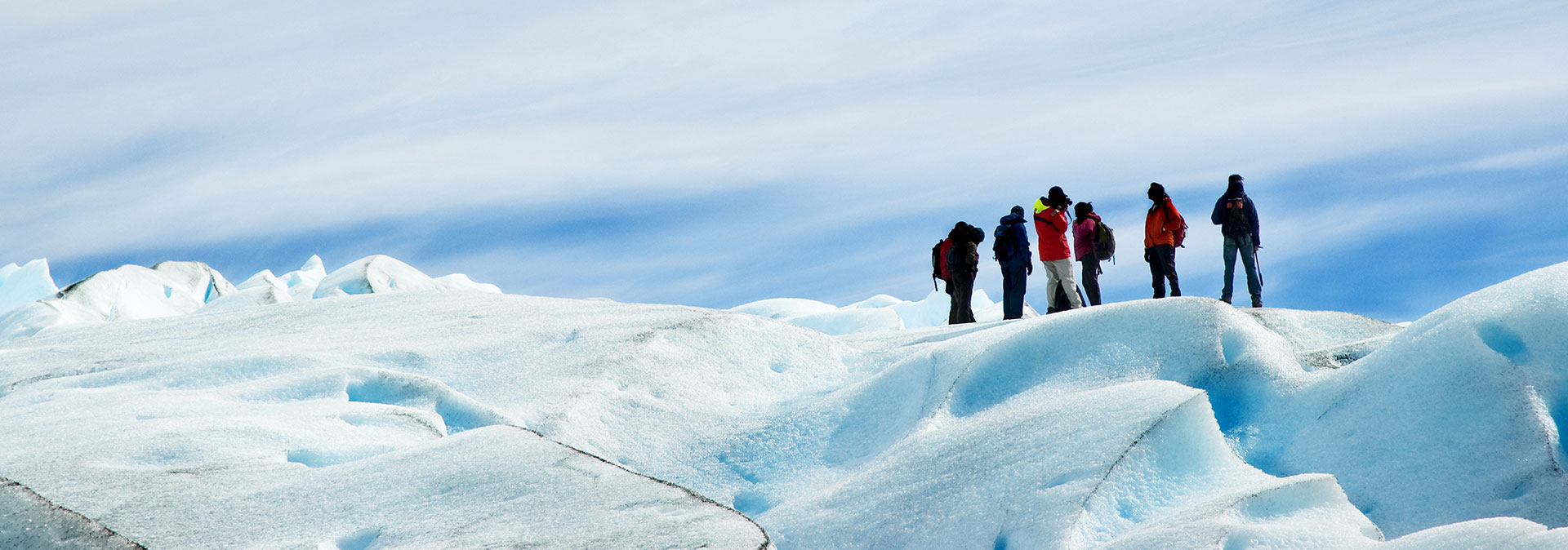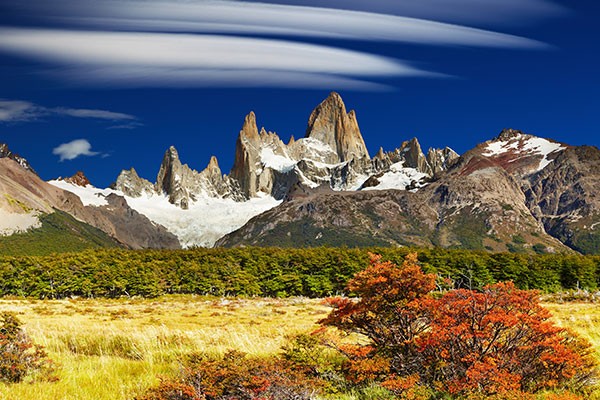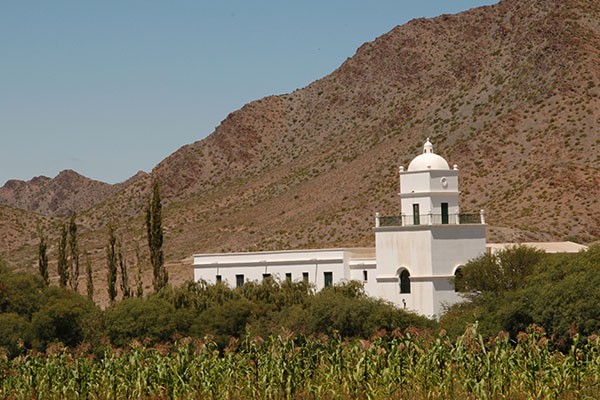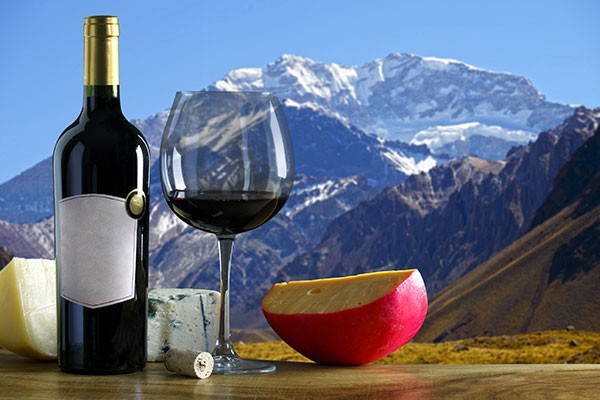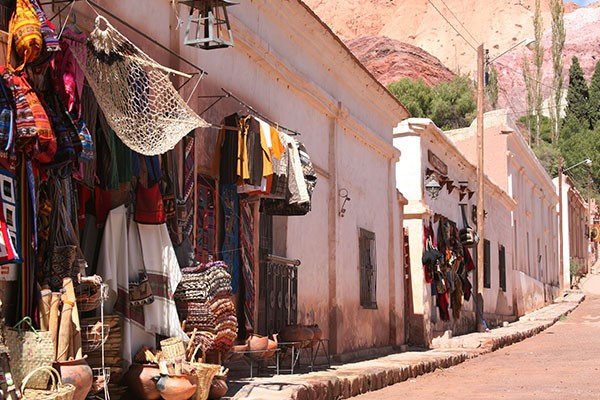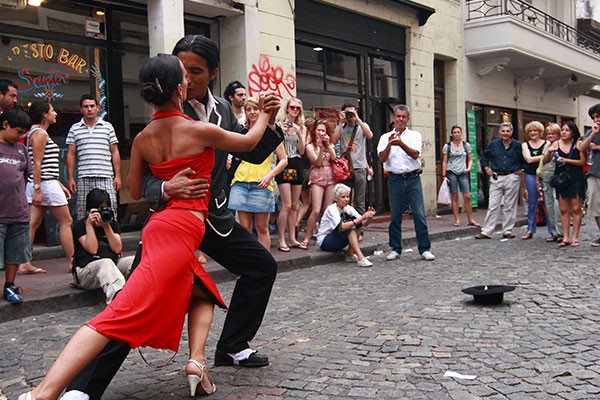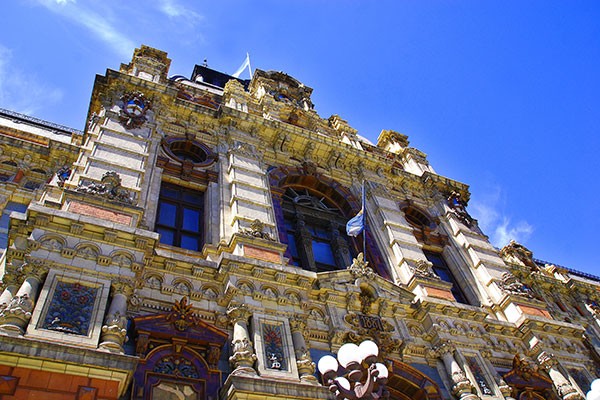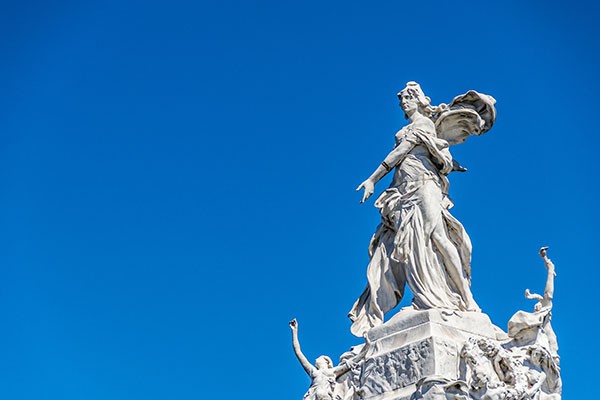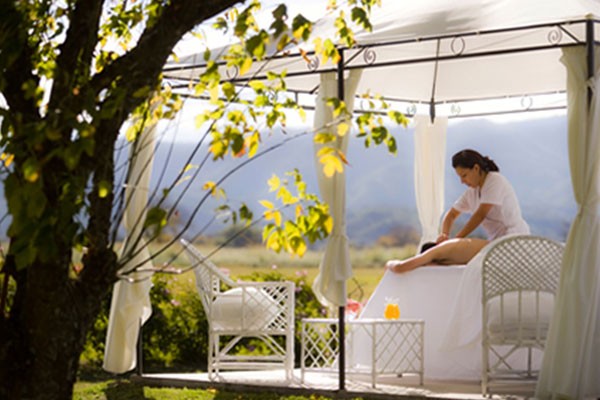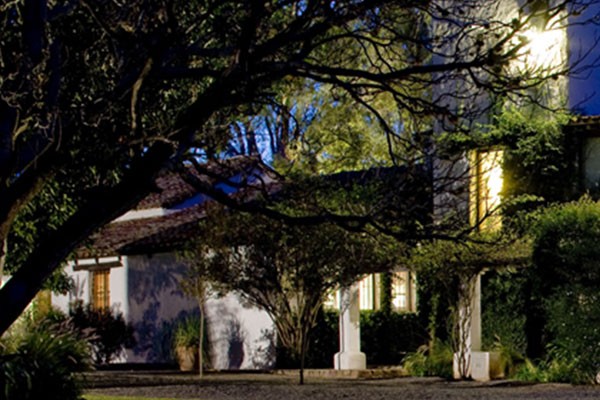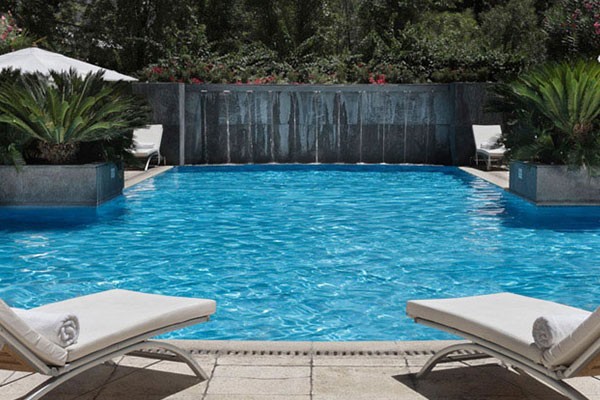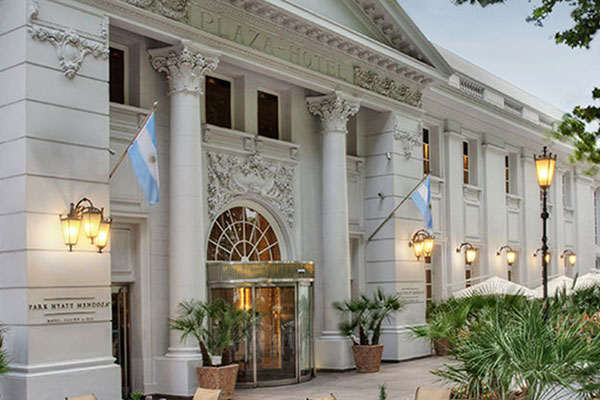Day 1: Buenos Aires
Meet & greet at Ezeiza International airport and transfer to hotel. Sightseeing of Buenos Aires, a cosmopolitan city that shows the influence of the numerous herds of immigrants that formed it. The tour starts at the historic Plaza de Mayo Square, Avenida De Mayo, and the 9 de Julio Avenue, with its eight lanes divided by small green squares with old leafy trees and enriched by sculptures and fountains. In the middle of this avenue, in the Plaza de la Republica, the Obelisk arises as a symbol of the city. We will visit San Telmo, one of the oldest neighborhoods in Buenos Aires; tour the old colonial house in the area would prove a real trip into the past. The place is called the “Zanjón de Granados”, a true archaeological site unveiled under the basements of a colonial house. Moving on southwards, we reach the picturesque and colorful port neighborhood of La Boca with its famous street, “Caminito”, whose architectonic characteristics and customs reflect the influence of the European citizens that came to these shores in the last years of the 19th century.
Finally reaching the district of Recoleta, the most sophisticated neighborhood in Buenos Aires. The Recoleta Cemetery, surprises the visitor with its location, its varied architectural resources and the personalities that are buried there, such as Eva Perón. Next to the cemetery, is situated in Recoleta's Cultural Center, very important for the impulse that it gives to the contemporary artistic manifestations. The visit continues northwards to visit the residential Palermo neighborhood with its elegant residences surrounded by large green areas; passing by the National Library, the School of Law, the Latin American Art Museum of Buenos Aires, and the 3 de Febrero Park conformed by the Rosedal, the Japanese Garden, the Botanical Garden, the Zoo and the Planetarium. Balance of the day at leisure.
Day 2: Buenos Aires
Breakfast at hotel. Morning visit to Tigre. Departure from the hotel northwards, passing by the residential neighborhoods and the President’s Residence in Olivos. Leaving the city of Buenos Aires, your next destination will be the San Isidro district, an elegant residential area. You will visit the beautiful Neo-gothic Cathedral, placed in the historic center of the city, which is surrounded by some Colonial and Italian style houses, cobbled streets and its square with centenary trees. The visit continues towards Tigre, a lovely neighborhood situated in the delta of Paraná River. The first inhabitants were smugglers that took advantage of the maze of little rivers and isles to hide and to sneak in with goods, evading custom taxes.
Finally, towards the end of the 19th century, it turned into the favorite place for recreation to the high class of Buenos Aires. Therefore, a sail along the Delta, will allow you to admire the old residences making contrast with the wooden houses built over piles, to beat the constant floods; you will also see some yatch and rowing clubs and get to know the typical features of a community that lives in close fellowship with the river. Lunch and afterwards we will enjoy some time to relax in this ideal place, in touch with nature and pure air, far away from the noises of the big city. Return to the hotel. Transfer to the airport for flight to Mendoza. Balance of the afternoon at leisure in Mendoza.
Day 3: Mendoza
Breakfast at Hotel. Full Day Wine Experience including lunch. Enjoy being guided by e wine maker, to taste wines and visit the most prestigious wineries of Mendoza! Early in the morning we will meet the oenologist who will accompany us throughout the tour. We will depart to Mendoza’s agricultural oasis and visit two prestigious wineries, of wine’s circuit; we will visit its facilities and be able to participate in a guided wine tasting, during which we will begin to familiarize ourselves with the local’s wines, and its elaboration process. Our guide will explain us the technique of wine tasting, wine production techniques, the importance of the cork in the bottle and the correct way to handle a glass in order to taste wine. At noon we will have lunch in a recognized winery, where we will enjoy an unforgettable gastronomic experience. In the afternoon we will be able to visit other winery and enjoy a wine tasting session. As the sun sets behind The Andes mountains, we will return to the hotel.
Day 4: Barreal
Breakfast at Hotel. Sightseeing transfer to Barreal. Departure from the hotel westwards towards the Andean Range. We will drive through mountain roads admiring the surrounding landscape where the magnificence of Mt Aconcagua, the highest peak in America, stands out with its 6,959 meters. We will pass by Chacras de Coria where many “mendocinos” have their well-off weekend houses. Passing by Upsallata we will reach the ski resort of Penitentes and further west the famous Puente Del Inca, a natural bridge over Cuevas River that the aborigines used on their way from Argentina to Chile and Pre-Columbian Peru. This zone is famous for its mesothermal radioactive waters. It is interesting to observe the ruins of an ancient thermal hotel located near the bridge. It operated as a thermal resort last century until it was swept away by an avalanche. During this tour we will observe Mt. Aconcagua is the highest mountain in the Americas, and the highest mountain outside Asia. It is located in the Andes mountain range, in the Argentine province of Mendoza. We will then move back to Uspallata and them on northwards towards Barreal, passing by Las Bóvedas, where it is interesting to visit the house where Don José de San Martín spent his latest days in Argentina, before moving back to Europe.
We will reach them El Leoncito National Park to sightsee its most interesting viewpoints and visiting the well known Observatory of El Leoncito. It was created in 1994 as a reserve and became a national park in 2002, in order to protect representative samples of the Puna and High Andean scrublands, as well as historical and paleontological sites (including a portion of the Inca’s Way). The fauna include important species like the guanaco and birds of prey such as the peregrine falcon (the fastest bird on Earth). Given the lack of atmospheric pollution in this area, it is particularly suitable for astronomical observations. Within the park are two astronomical observatories: Félix Aguilar Observatory and the Leoncito Astronomical Complex.
Day 5: Villa Union
Breakfast at Hotel. Today we will depart from Barreal towards Villa Unión sightseeing en route: Altos del Colorado (3,600 m.a.s.l),Don Carmelo fauna reserve, the little hamlet of Iglesia passing by San Guillermo Natural Park one of the world’s most important nature reserves because it houses endangered animals like the “guanacos”, “vicuñas”, “zorros colorados”, “pumas” the “ñandú” and the “cóndor”. The roads continues passing by Las Flores and then Pismanta Hot Springs, an internationally well-known thermal center. Its warm waters (45ºC) are sprung from volcanic activity and are highly praised for its healing qualities. We reach then Cuesta Del Viento dam, a magnificent blue mirror of crystal water surrounded by the spectacular immensity of the surrounding mountains. Lunch at Finca el Martillo. After lunch, we move forward to Jachal, sightseeing this very peaceful and traditional town. You can see a National Historic Church where you can find a leather statue of Christ on the Cross crafted by Indian tribes from “El Cuzco” in Peru and brought to San Juan in 1783. You can also indulge yourself in the extraordinary view of “Los Caucanes” dam, fit for fishing. In the late afternoon, we will final reach Villa Unión.
Day 6: Villa Union
Breakfast at Hotel. Full day visit to Talampaya and in the afternoon, the best time due to sunset, the Ischigualasto National park, also known as Moon Valley. The day starts with visit to Talampaya Canyon. Its reddish 80-meter (265-foot) high walls were carved by wind erosion which created particular shapes such as: the friar, one of the three Wise Men, the cathedrals, the spikes, the manger, the castle, among others. The entrance to the park is located at a pace called ‘La Puerta’ (the Entrance Gate), a 90-meter (300-foot) wide path that leads visitors to the Talampaya River bed. Talampaya, nowadays part of the Province of La Rioja, was in fact part of the Ischigualasto Formation. The researches in the area started in 1958, and over one hundred prehistoric reptile fossils were uncovered in less than two months. They belonged to the Permian and the Triassic Periods. Many of them had been so far totally unknown.
It is possible to observe different species of living fauna such as: guanacos, hares, vizcachas, armadillos, pumas, wolves and birds such as condors, larks, eagles and eaglets. In the afternoon, we will visit the Ischigualasto Provincial Park, also known as ‘Valle de la Luna’ (Moon Valley). Ischigualasto is the only place on earth where it is possible to observe a full sequence of continental sediments, dating back to the Triassic Period, which consists of abundant fossils, gathered in the same site due to continuous deposits during the whole period. Thus it allows studying the most important animal species transition in the history of the world: the replacement of crafted wines, raisins, ‘arropes’, grapes, and traditional knitted garments and colorful tapestries. It is one of the towns in the province where the Carnival and ‘Pachamama’ (Mother Earth) celebrations are held more enthusiastically and in-keeping with the ancestral aborigine habits.
The next stop will be at Quilmes Ruins, an old aborigine settlement that belonged to the Quilmes aborigines. The complex, which is a masterpiece of urban and defensive layout, lies on the eastern side of the ‘Sierras de Quilmes’, where the remains of the central area spread in the way of a natural amphitheatre. The central citadel is protected by fortresses on both sides. The walls were about 2 to 3 meter thick, the houses were roofed with cactus stems and branches plastered with mud. These ruins go on for several kilometers further to the southeast but numerous vestiges have not been found yet. It is thought that Quilmes, in the old days, housed up to 2,500 aborigine inhabitants, all of which were deported to Buenos Aires by the Spaniards to the place that nowadays holds their name, in the province of Buenos Aires, in a desperate attempt to beat these indomitable people who struggled against white men domination. Continuation to Cafayate.
Day 7: Belen
Breakfast at hotel. Departure northwards towards the small town on Belen, in the province of Catamarca. Today the scenery of the Puna with its amazing loneliness will be our travel mate. The road gets most interesting in the up and downhill drive of the “Cuesta de Miranda“. We will visit the pre-Columbian ruins at the ‘Shincal de Quimivil’. The Incas inhabited the area from 1470 to 1535. The urban layout is similar to that of Cusco, in accordance to its status as provincial capital of this vast aborigine empire. The site, discovered in 1981, spreads over 21 hectares (52 acres) where remains of different constructions can be seen. Arrival in Belén. The small village of Belén lies by the side of the river of the same name, submersed in mountain scenery of great beauty. It is the birth town of very typical loom-woven garments produced with vicuña, llama and sheep wool.
Day 8: Cafayate
Breakfast at hotel. Transfer to Cafayate visiting en route Quilmes Ruins. One of the most important findings has been a section of the Inca Trail that from Catamarca enters the Province of Tucumán and then Salta, following the Calchaquí Valley. It is remarkable there the Yokavil Valley, also known as Santa María’s Valley. The last town before reaching the limit of the Province of Tucuman is Santa María, interesting for its paprika mills, crafted wines, raisins, ‘arropes’, grapes, and traditional knitted garments and colorful tapestries. It is one of the towns in the province where the Carnival and ‘Pachamama’ (Mother Earth) celebrations are held more enthusiastically and in-keeping with the ancestral aborigine habits.
The next stop will be at Quilmes Ruins, an old aborigine settlement that belonged to the Quilmes aborigines. The complex, which is a masterpiece of urban and defensive layout, lies on the eastern side of the ‘Sierras de Quilmes’, where the remains of the central area spread in the way of a natural amphitheatre. The central citadel is protected by fortresses on both sides. The walls were about 2 to 3 meter thick, the houses were roofed with cactus stems and branches plastered with mud. These ruins go on for several kilometers further to the southeast but numerous vestiges have not been found yet. It is thought that Quilmes, in the old days, housed up to 2,500 aborigine inhabitants, all of which were deported to Buenos Aires by the Spaniards to the place that nowadays holds their name, in the province of Buenos Aires, in a desperate attempt to beat these indomitable people who struggled against white men domination. Continuation to Cafayate.
Day 9: Salta
Breakfast at hotel. Morning visit to a winery with wine tasting. The small city of Cafayate stands among rivers and vineyards, boasting some of the most beautiful and imposing view in the province, where it is possible to admire its nice old houses that gracefully combine colonial and Baroque styles. It is worth a visit its parish church, the Town Hall and the Regional and Archaeological Museum. The region is well known because of its wine production among which stands the ‘torrontés’ variety. Visit a famous winery to techniques and seize the chance to taste some of the finest Argentine wines. Continuation to Salta along the Cafayate River Gorge. In the first part of the road, a series of wind-eroded reddish sandstone formations will surprise the traveler at each end of the road. The most outstanding formations are: ‘Tres Cruces’ (Three Crosses), ‘Garganta Del Diablo’ (Devil’s Throat), ‘El Anfiteatro’ (The Amphitheater), ‘El Sapo’ (The Toad), ‘El Fraile’ (The Friar), ‘El Obelisco’ (The Obelisk) and ‘Los Castillos’ (The Castles).
Day 10: Salta
Breakfast at hotel. Morning city tour of Salta. Salta boasts a touch of elegance that is unmistakable symbol of a sumptuous past that is still alive in its large old manors and flowery patios. Among the big Argentine cities, this is the city where the Spanish influence is best preserved. The neuralgic center of the city is 9 de Julio Square, around which some of the most important buildings in the city are situated, as well as the main hotels and many bars and restaurants. The visit will make it possible to have a look at the most precious gems dating back to colonial times, such as: the Church and Monastery of San Francisco, rebuilt in the mid XVIII century, declared Minor Main Church by the Vatican in 1997; the ‘Cabildo and Historic Museum of the Northwest’ (old seat of the vice-royalty government and of the provincial government later on), main attraction in the city whose construction started the same day of the foundation, but whose current building was completely rebuilt by the late XVII century; the San Bernardo Monastery, dating back to the late XVI century, which boasts a carob-tree main gate considered a jewel of the local colonial art; and the Italian-style building of the Main Church, built in the XX century, that houses the mortal remains of the hero of the Independence Wars, General Martín Miguel de Güemes.
The tours go on towards the city outskirts, up to San Bernardo Hill, where the Monument to General Martín Miguel de Güemes stands. From the hill you will get a great view of the city and the Lerma Valley. The visit ends at the Handicraft Market where some most assorted examples of the local craftsmen’s skills can be appreciated. All around the province of Salta nice pieces of pottery, basketry, knitted ‘barracan’ fabrics, tapestries and ‘ponchos’ are produced, as well as music instruments. Afternoon at leisure. In the evening, get in touch with the traditional music of the Northwest.
Day 11: San Antonio de los Cobres & Purmamarca
Breakfast at hotel. This tour makes it possible to reach up to 3,775 above sea level upon arrival in San Antonio de los Cobres. The route, running parallel to the Train to the Clouds rails renders possible to observe its viaducts, switch-backs and loops of this impressive engineering masterpiece that it the train, runs in the depth of Quebrada del Toro (Bull’s River Gorge). A place where the shining blue of the sky, the multicolored hills covered by cactuses and bushes and the pure Andean air. You will finally reach the small village of San Antonio de los Cobres, located 163 Km. away from Salta. It has a population of 3,500 inhabitants and its main economic activities are weavings and handicrafts. From there we will continue northwards and then eastwards again across Salinas Grandes and down Cuesta de Lipán till reaching Purmamarca, a picturesque town seemingly stuck in ancient times, with the striking Cerro de los Siete Colores (‘Seven Colored Mount) which frames its adobe parish church devoted to St. Rosa de Lima dating back to 1648 and declared National Historic Monument.
Day 12: Purmamarca
Breakfast at hotel. Short hike in the so called “Los Colorados“ (Reddish Mountains), followed by tour to Tilcara and Humahuaca. After the short and scenic hike to Los Colorados, we will head north for a drive to Tilcara, to see the Pucará de Tilcara, old pre-Colombian aborigine stronghold partially rebuilt, and the Historic Museum of the Province in front of the main square, which counts with an interesting asset of Inca art pieces coming from different sites in Argentina, Peru, Bolivia and Chile. The climb continues, and upon reaching Huacalera the route crosses the Capricorn Tropic. In Uquía you may visit the local parish church which holds the oldest altarpiece in the region and a collection of paintings coming from Cuzco representing the harquebuser angels.
Finally arrive at Humahuaca, located at 2,939 meters above sea level, founded by local aborigines in 1594 and unique for its pure colonial style with its abode houses, its narrow cobblestones streets and colonial style street lamps, but mainly because of the exquisite kindness of its people. It is interesting to stop for a minute at its main square around which the most important buildings and monuments gather, such as: the church, the old Town Hall, and the Monument to the Wars of the Argentine Independence (currently known as Monument to the Aborigine) and the city fair. Return to Jujuy through the same route, stopping, as promised at Maimará, to be surprised by the colorful ‘Painter’s Palette, notorious formation on the mountain slope and the ‘People’s Cemetery’.
Day 13: Jujuy & Buenos Aires
Breakfast at hotel. In due time, transfer to Jujuy airport for flight to Buenos Aires, connecting on the same day with your international departure overnight flight.


